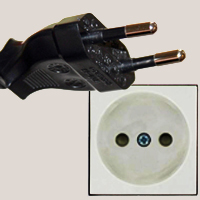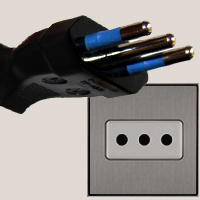Latin America Regulatory Compliance Group
Type Approvals for Latin America and the Caribbean
Latin America Regulatory Compliance GroupLARCG COVERS CHILE
LARCG COVERS LATAM
SUBTEL Type Approval in Chile
SUBTEL (Subsecretaria de Telecomunicaciones) is the telecommunications regulating agency in Chile. Products using radio frequency, cellular, or satellite technologies require approval and certification.
Chile does not require in-country testing in most cases. We can generally use existing test reports for the homologation process. Technical documents will be reviewed and validated in the approval process. Per Resolution 1985, 2017, Chile will only consider system or family approvals.
Chile does not require local representation, but does have labeling requirements depending on the type of equipment.
Chile has restrictions on maximum radiated power output depending on the frequency and use of the equipment. Some exceptions may be granted based on new test reports issued by a certified laboratory.
Products requiring SUBTEL approval include:
- Portable transceivers
- Remote radio controls
- Wireless microphones
- Wireless telephones, including some DECT systems
- RFID equipment
- Radio alarms
- Communication systems for medical implantation
- Other equipment used for medical applications
- Equipment used as radar systems in vehicles
- Zigbee devices
If a device can be classified under these categories of technology then a homologation certificate will be issued upon obtaining a certificate of conformity by a registered Chilean testing facility. If a device cannot be classified under these categories than the manufacturer must obtain “special authorization” from SUBTEL.
Key SUBTEL resolutions:
Resolution 1985, 2017: Resolution 1985, 2017 amends permissible frequency bands in relation to a device’s maximum radiated power output and field strength, as well as resolves confusion around permissible frequency bands in relation to their usage inside and outside a structure.
Resolution 840, 2007: Updates Resolution 755, 2005, permitting use of very low power devices not considered in Resolution 755
Resolution 666, 2008: Updates Resolution 755, 2005, permitting use of other low power devices not considered in Resolution 755
Current lead time for SUBTEL approval and certification is 4 weeks.
SEC (Safety) and energy efficiency
Manufacturing, importation and commercialization of certain products in Chile require mandatory safety certification and in some cases energy efficiency certification, as established by SEC (Superintendence of Electricity and Fuels).
Products requiring SEC approval include:
- Electrical products
- Home appliances
- Switches, sockets and outlets
- Energy measuring devices
- Lamps and related elements
- Personal protection products
- Material for sanitary construction and installation works
- Steel rods used in construction with reinforced concrete
- Fire extinguishers
- Products using gas and liquid fuel
There are labeling requirements that apply and testing of samples in Chile is required for safety approval and energy efficiency certification.
Contact us to start the approval processChile Plug Types


Type C plugs are most commonly used in South America, Asia, and Europe (except the United Kingdom, Ireland, Cyprus and Malta), and are rated at 2.5 Amps. They operate on AC current at 220 – 240 Volts. Probably the most widely used international plug, CEE 7/16 or Europlug, features two 4 mm round pins measuring 19 mm in length, which are spaced 17.5 mm apart at the tip and 18.6 mm apart from the center point of each pin’s base. 10 mm long insulated sleeves slightly cover the base of the pins; however, they are relatively flexible which allows the plug to mate with any socket that accepts 4.0 – 4.8 mm round contacts on 17.5 – 19 mm centers. As a class II plug, the Europlug is generally limited to applications that require 2.5 amps or less. Note: whereas type C plugs are very commonly used, this is not the case for type C sockets, as these sockets are older and not grounded. Most counties now require grounded sockets to be installed in new buildings; and as such, the sockets have become illegal almost everywhere – they are being replaced by type E, F, J, K or N. To be clear, only the sockets have become illegal; the plugs remain in use.
Type L plugs can be found in Chile, Cuba, Uruguay and Italy. The grounded plug/socket found in Italy, CEI 23-50 (formally CEI 23-16) is rated at both 10 and 16 Amps. Both feature three rounded pins placed in a line. Contact diameter and spacing differ between either plug, and as such they’re incompatible with each other. The 10 Amp version has three 4 mm round pins, which measure 19 mm in length. The distance from line to neutral pins is 19 mm, while the distance between the centers of either of the two outer prongs and the center of the ground pin is 9.5 mm. Note: the 10 Amp style socket also accepts type C plugs. Conversely, the 16 Amp version features three 5 mm measuring 19 mm in length. The line and neutral pins are spaced 26 mm apart, while the distance between the centers of either pin to the center of the grounded pin is 13 mm. Since both plugs are symmetrical, they can be inserted in either direction, which means they are unpolarized.